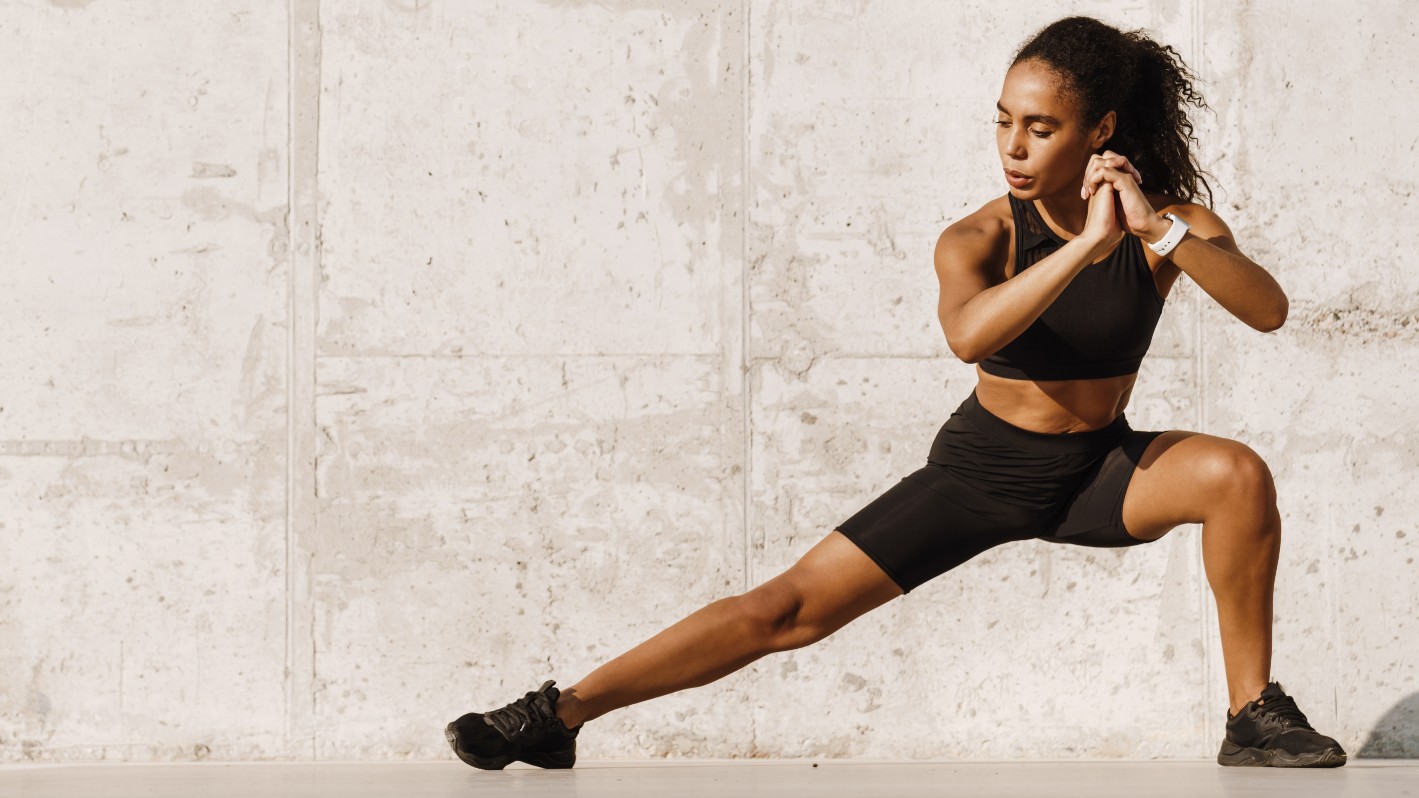
If you don't want to use weights, you only need your body weight and 12 minutes spare to work your muscles hard. Trust us, this is the perfect go-to if you need a home workout without weights.
We test plenty of physical and mental workouts at Tom’s Guide, from celeb exclusives to plank variations or breathing exercises — we like to think we’ve got most areas covered. We’ve designed this one to torch your major muscle groups and work up a sweat — all you need to do is roll out one of the best yoga mats to get started.
Bodyweight complexes are extremely efficient at adding intensity to your workouts, especially if you choose not to lift weights. Try to focus on your form during the short 12 minutes of work, and if you have more time, you could also pair it with another workout from our top picks at the bottom of this page. Read on for more.
What is calisthenics?
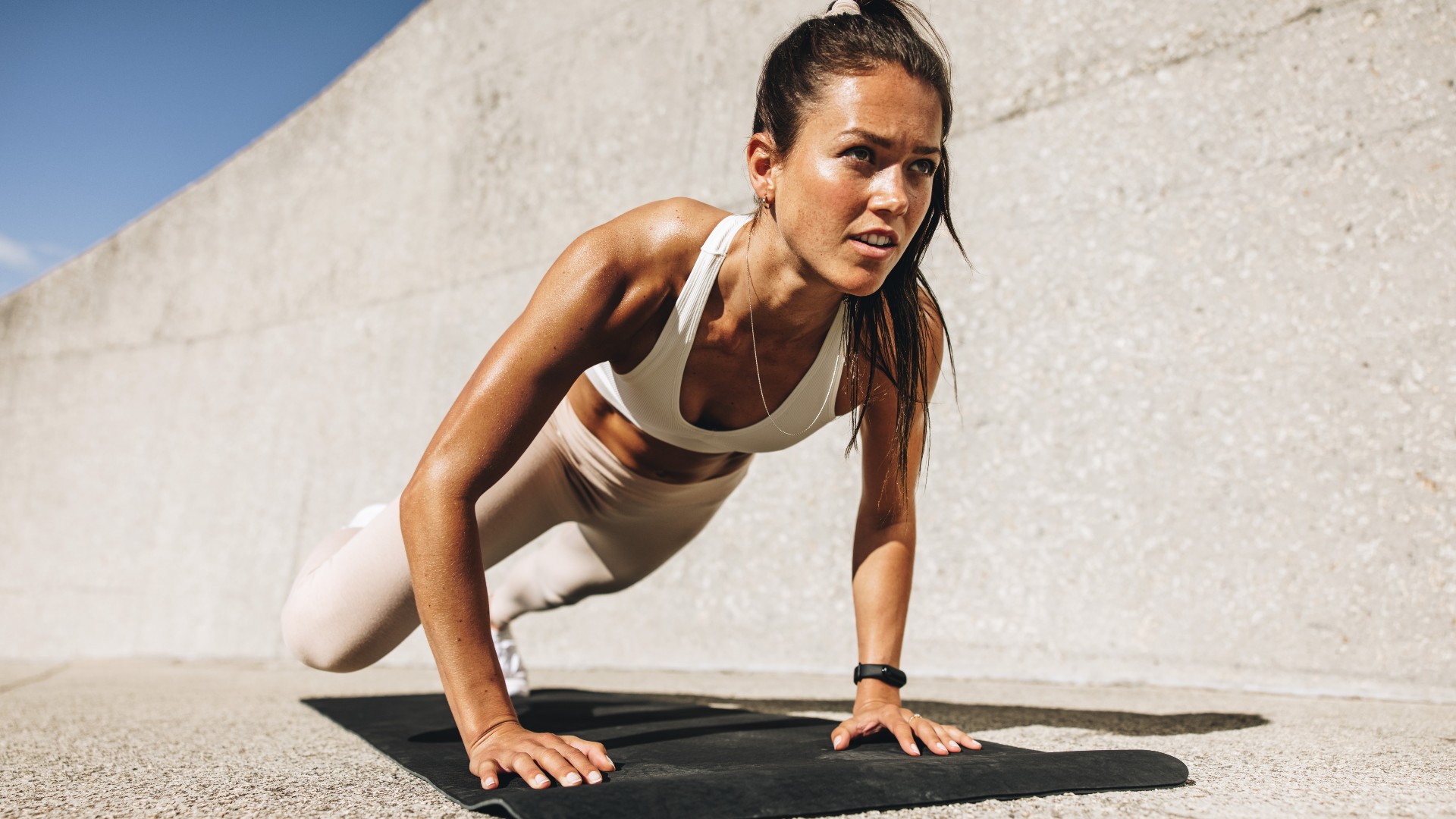
Calisthenics embodies bodyweight training, and they’re interchangeable. Calisthenics includes bodyweight compound exercises, which means the moves will work various muscles and joints rather than one muscle in isolation, like squats.
Calisthenics can scale from functional training like CrossFit and F45 to advanced gymnastics and highly technical moves. But at the heart of it, your body weight drives the movement, and the payoff includes burning calories, building muscle and improving your functional strength, endurance and coordination.
We spoke to a calisthenics instructor who put together this calisthenics workout for beginners, but if you train often, the one below is suited to all abilities. Fear not, you won't need to contend with handstands or backflips this time.
6-move 12-minute calisthenics workout
The six-move calisthenics workout includes three exercise complexes. A complex means performing a series of exercises back-to-back. Typically done with weights, they allow you to transition from one exercise to the next without resting or switching equipment — you don’t even need to put your weights down.
Get instant access to breaking news, the hottest reviews, great deals and helpful tips.
In this case, you won’t have equipment to contend with, so we’ve increased the rep count and time cap. Try to move seamlessly from one move to the next without rest. Work for three minutes on the first complex, switching between the three exercises for 10 reps each round, then rest for 60 seconds and move to the next complex.
Complex 1: Upper body
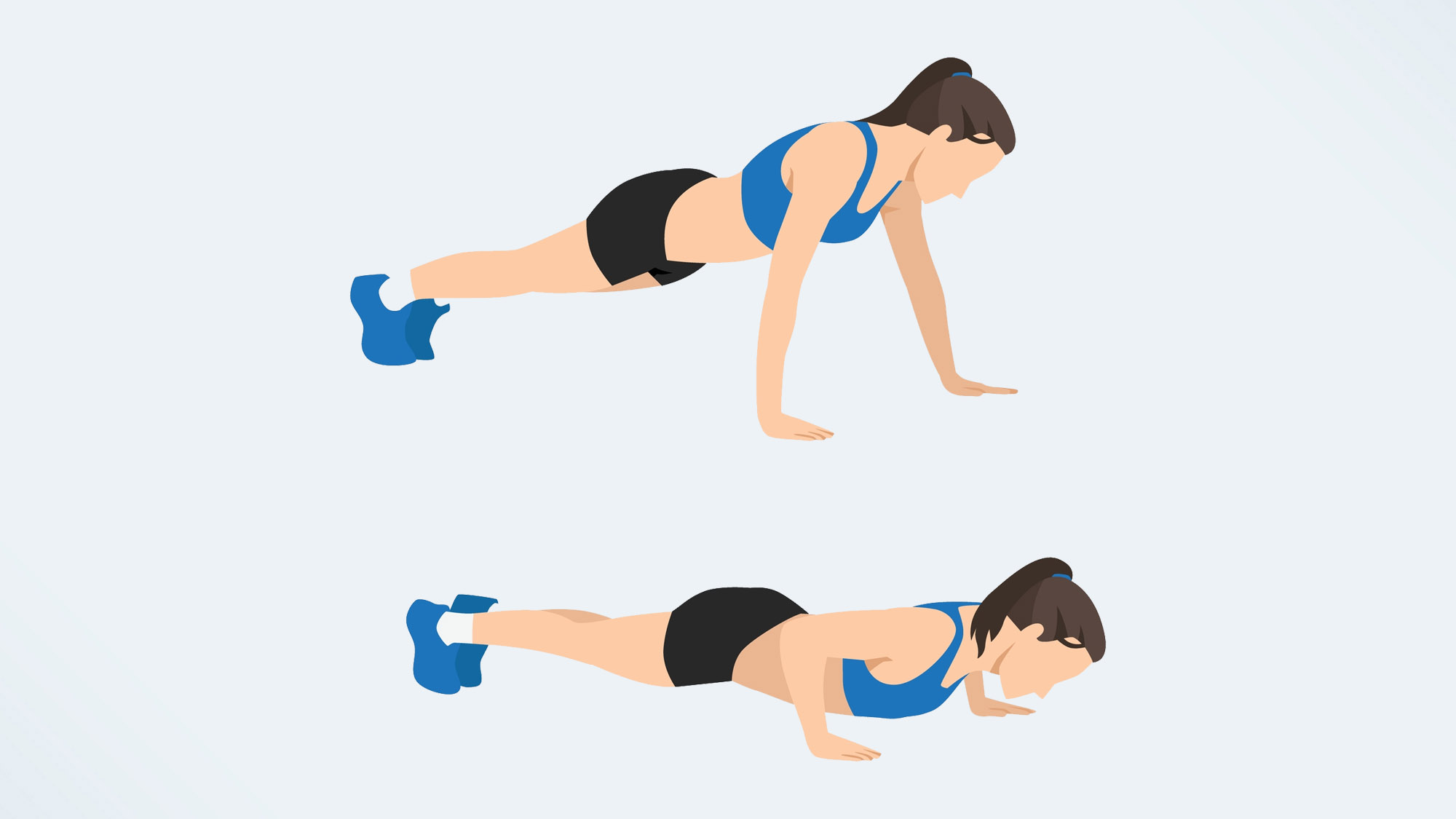
Hand-release push-ups: 10 reps
You can learn how to do a push-up here. During the hand-release variation, lift your hands off the floor at the bottom of the push-up, then replace them and push back up to the starting position. The dead stop is hard, so try to lift your hips and chest together, moving the body as one unit to avoid hurting your lower back.
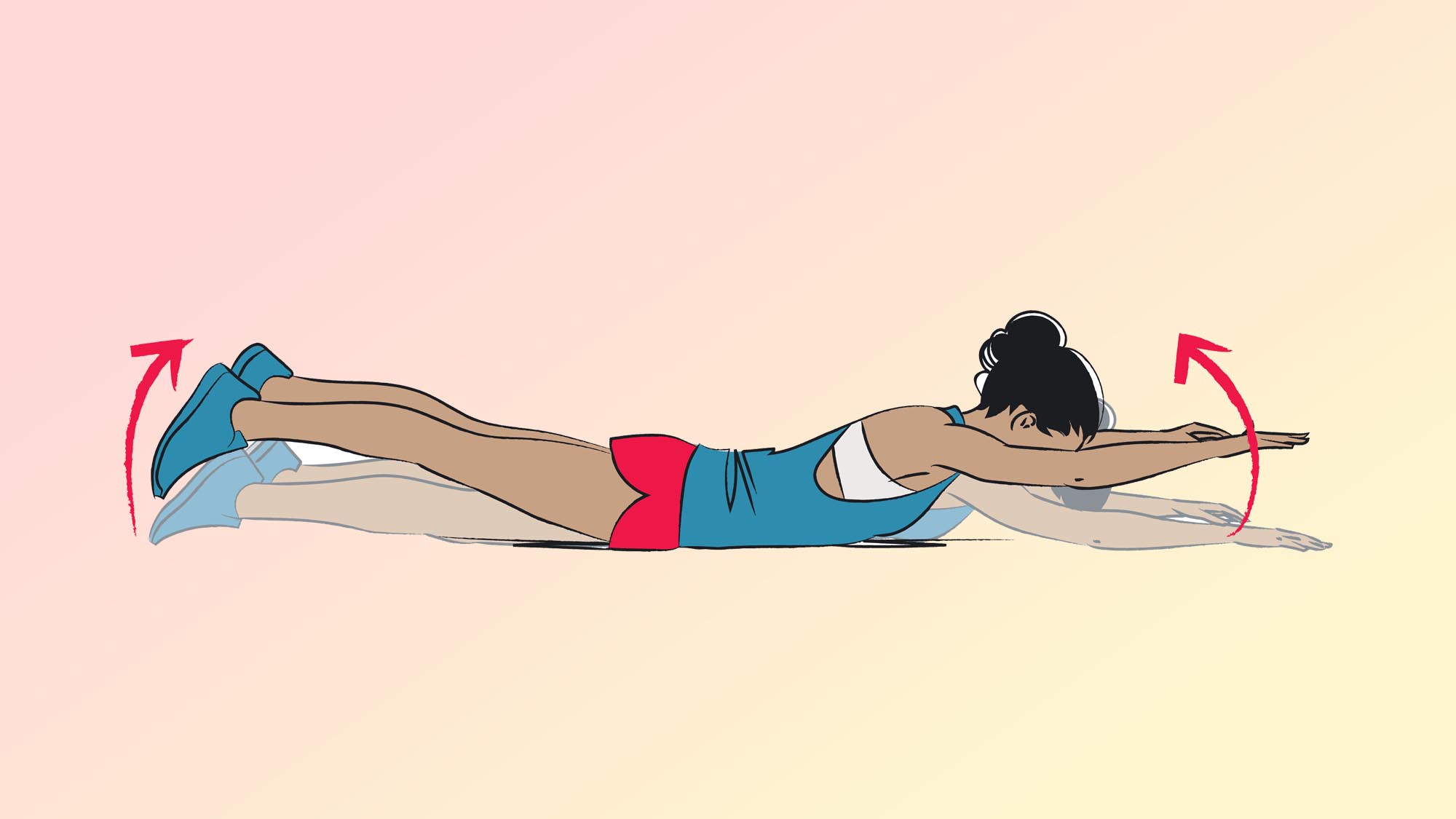
Supermans: 10 reps
From the push-up, lower to the floor and move straight into your Supermans. Squeeze your back and glute muscles hard as you lift your thighs and chest off the ground. Learn how to do Supermans here.
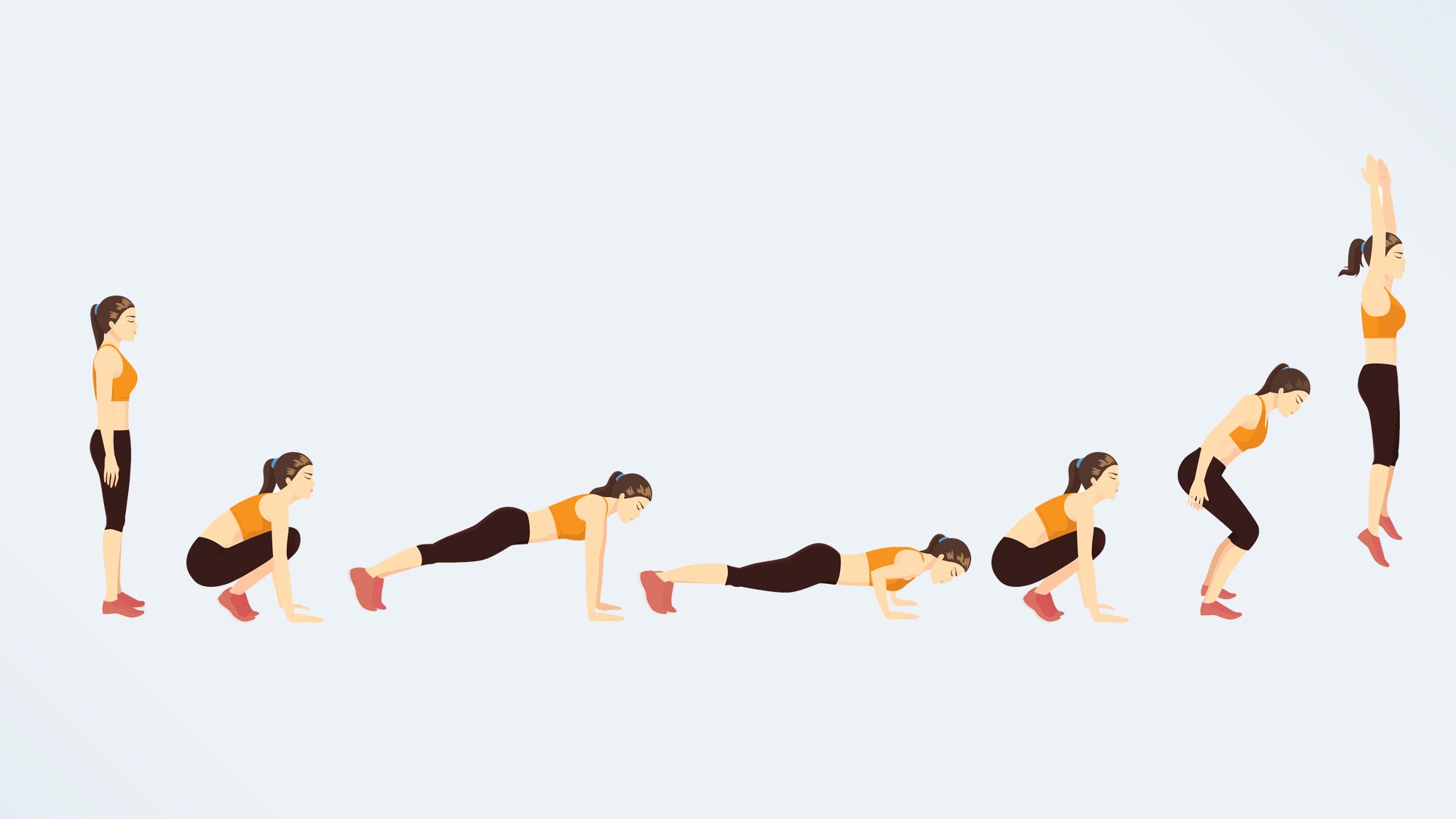
Burpees: 10 reps
Learn how to do a burpee here. From your Superman position, push away from the ground into your chest-to-floor burpee. Again, try to lift your chest and hips together and move explosively from the ground to standing.
Complex 2: Legs and core
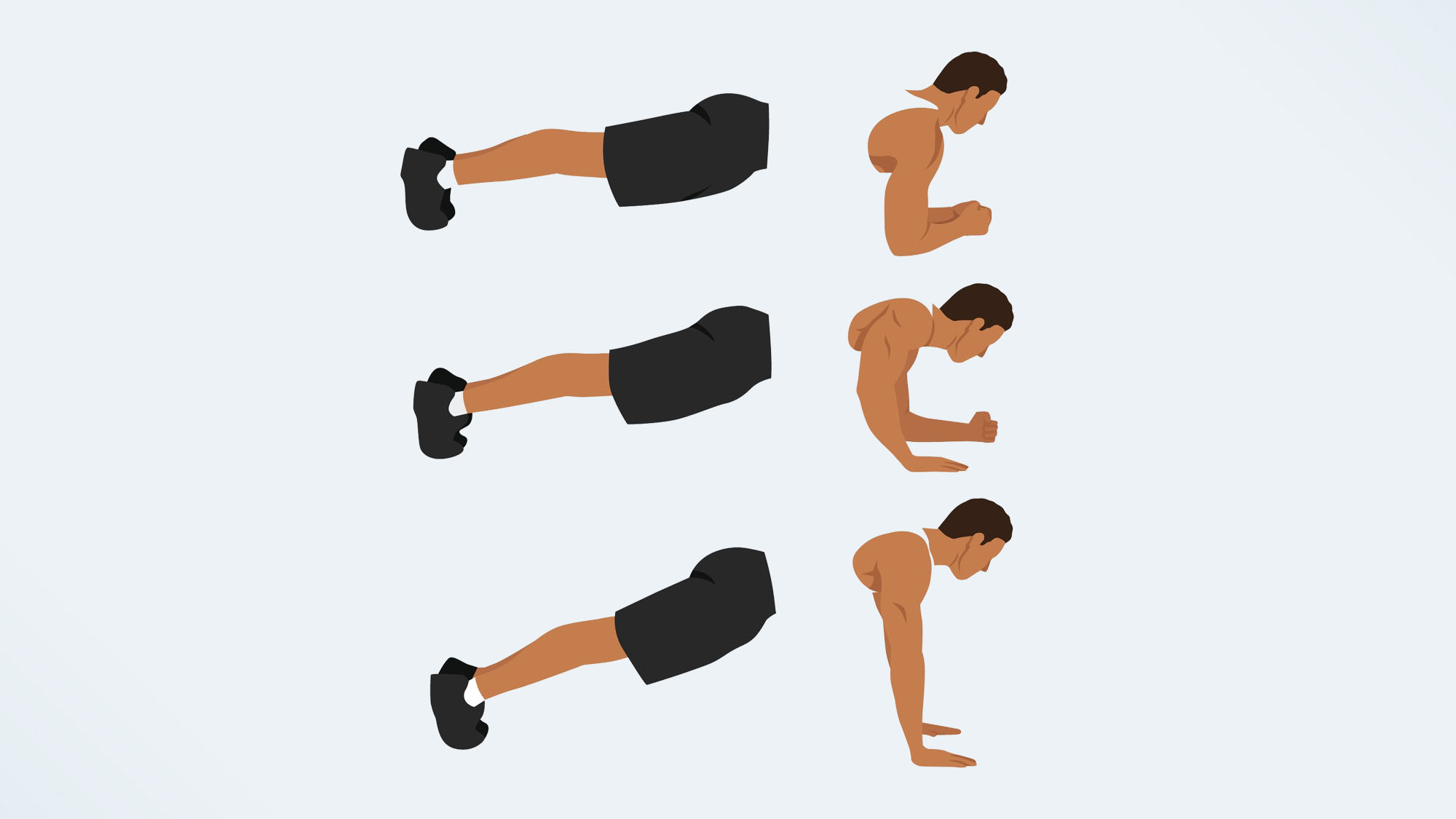
Commando planks: 10 reps
Recently, I did 90 commando planks every day for a week, and you could accumulate more than that during the three minutes. Avoid swinging your hips, and always stack your hands underneath your shoulders during each rep.
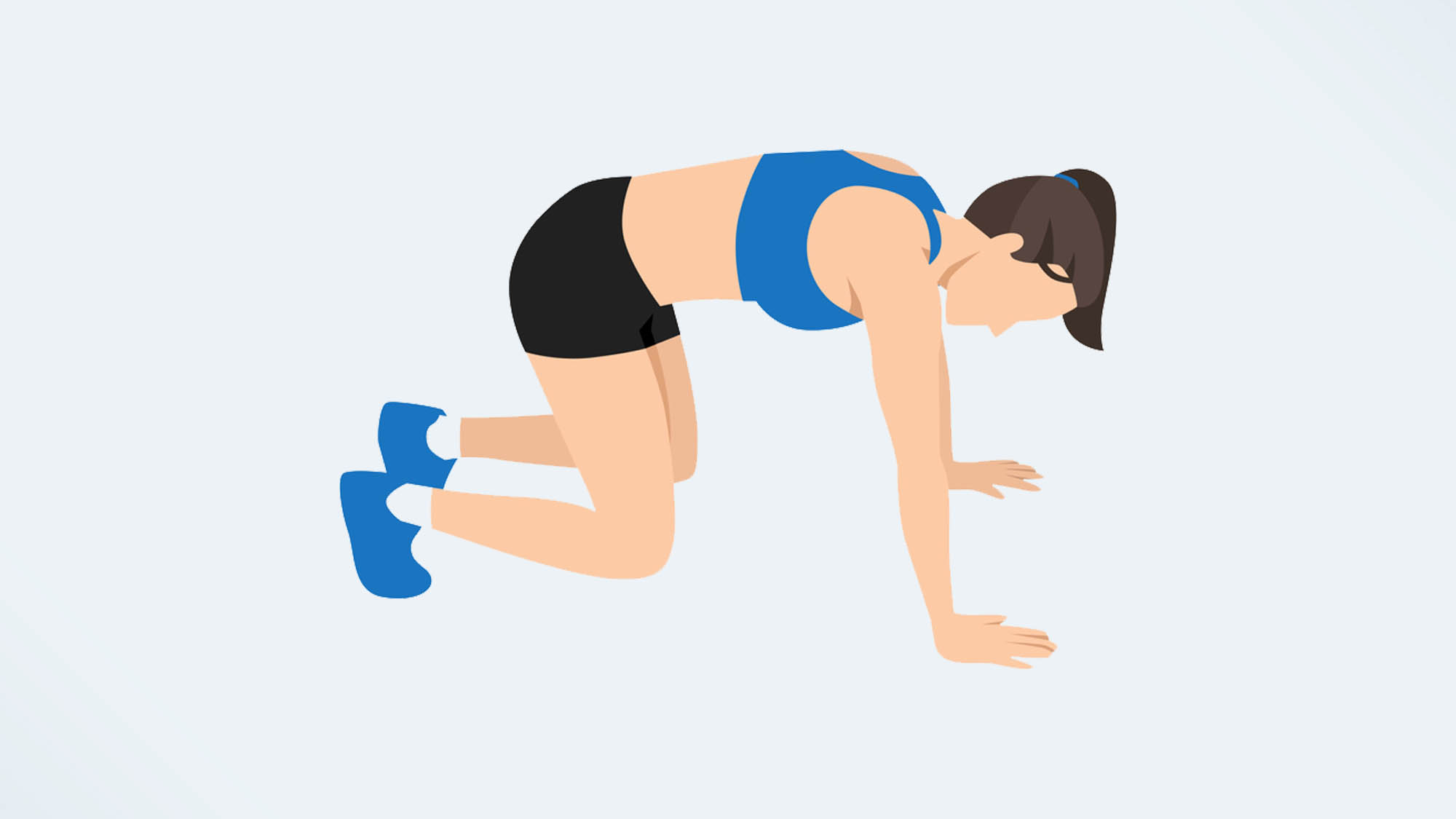
Bear squats: 10 reps
From the high plank position, bend your knees into a tabletop position and move into bear squats. Your knees should hover an inch above the floor as you send your hips back toward your heels while keeping a flat back and low position.

Bear crawls: 10 reps
Bear crawls are an effective full-body exercise, but the move is easy to get wrong. You could add a resistance band (see above) if you're feeling brave.
How:
- Start on your hands and knees with your toes tucked under. Shoulders should stack over your wrists and hips over your knees.
- Lift your knees an inch off the ground and engage your core.
- Step your left hand and right foot forward, keeping your knee bent just above the floor. Maintain a flat back.
- Then walk your right hand and left foot forward. Continue moving forward for five reps per side, then back for five reps per side.
Complex 3: Giant set
For the last three-minute complex, piece the six moves together into one super complex. Perform each exercise for 10 reps, then accumulate as many rounds as possible while focusing on good form.
Verdict
Complexes help improve the connection between the mind and body, work muscles harder and build functional muscular endurance. The aim of the game is to increase volume and reduce rest, using the popular time under tension (TUT) technique.
And research supports adding calisthenics into training. One study published in the Journal of Strength and Conditioning found a significant increase in upper body strength following the regime compared with bench press participants.
If you currently suffer from back or shoulder pain, chat with a trainer or your physician before starting a new exercise program or any unfamiliar exercises that could aggravate your injury.
More from Tom's Guide
- 5 best ways to build muscle without lifting heavier weights
- This 4-move ab workout sculpts your core in just 12 minutes
- 3 assisted stretches develop flexibility and strength without equipment

Sam Hopes is a level 3 qualified trainer, a level 2 Reiki practitioner and fitness editor at Tom's Guide. She is also currently undertaking her Yoga For Athletes training course.
Sam has written for various fitness brands and websites over the years and has experience across brands at Future, such as Live Science, Fit&Well, Coach, and T3.
Having coached at fitness studios like F45 and Virgin Active and personal trained, Sam now primarily teaches outdoor bootcamps, bodyweight, calisthenics and kettlebells.
She also coaches mobility and flexibility classes several times a week and believes that true strength comes from a holistic approach to training your body.
Sam has completed two mixed doubles Hyrox competitions in London and the Netherlands and finished her first doubles attempt in 1:11.
